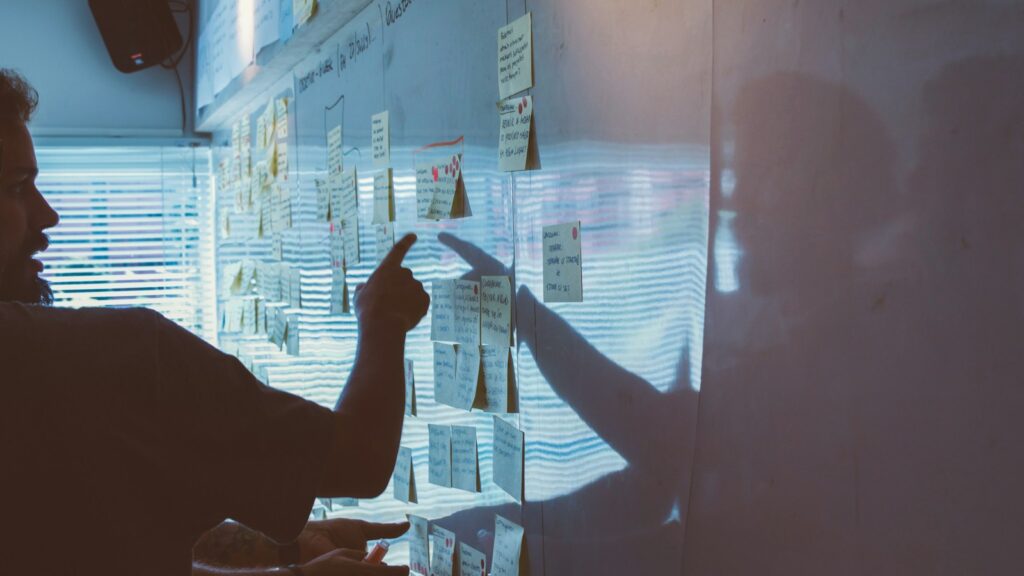Today’s L&D vendor–customer partnerships that deliver genuine business impact share something most selection processes completely miss. It’s not the lowest price or the biggest libraries or the longest feature lists. It’s not even reputation or market presence.
It’s this: both parties understand that working smarter together creates value that neither could achieve alone.
Today’s workplace demands this collaborative approach more than ever. Skills are evolving faster than organisations can train internally. AI is reshaping roles we thought were stable. Competitive pressures intensify daily.
Why transactional relationships fall short
In this accelerating complexity, transactional supplier relationships where one delivers and the other receives simply can’t keep pace. Suppliers fulfill orders. Partners solve problems. Suppliers protect their margins. Partners share risks and rewards. Suppliers deliver to specifications. Partners challenge assumptions and co-create solutions adapted to changing conditions.
When business value is the only sustainable competitive advantage, we need external expertise that combines fresh cross-industry perspectives with deep understanding of our unique context. The question isn’t whether we need external expertise. It’s whether we’ll treat that expertise as a commodity to purchase or as a partnership to navigate complexity together.
Yet when it comes to selecting our L&D partners, most selection processes look for the wrong things – cost, capability lists, compliance checkboxes – while overlooking factors that actually predict partnership success. We choose suppliers when we need partners. We focus on deliverables when our organisation needs outcomes.
Over the years, I’ve researched high-performing learning teams, judged awards and, more recently, conducted interviews for my book The L&D Leader (coauthored with Michelle Ockers). Through all of this, I’ve noticed something about vendor–customer partnerships that genuinely move the business needle: selecting the right partner is essential if we are to become the right partner to each other.
Why typical selection processes fail
Most L&D partner selections follow a familiar script: define requirements, issue a request for proposal (RFP), score responses, pick winner. It’s efficient and it is defensible. But it rarely leads to transformational partnerships. I see three patterns that undermine well-intentioned selection:
- Selecting for past investment, not future value. Sunk costs keep us locked to familiar suppliers, even when evidence suggests a different path would create greater impact.
- Selecting for features, not business outcomes. Impressive capability lists mean nothing if they don’t solve the actual business problem. Yet most RFPs request feature comparisons, not outcome demonstrations.
- Selecting for lowest cost, not highest value. When price becomes the primary criterion, we eliminate partners willing to invest alongside us in innovation and risk-sharing.
These patterns keep us cycling through similar partnerships, achieving similar limited results.
What working smarter together actually looks like
When Siva Kulasingam joined Australian retailer Coles Group in 2017, he faced a familiar challenge: 115,000 retail workers across 2,000 locations, an outdated learning system, and an urgent need for transformation.
He could have issued an RFP, compared features, and selected the lowest bidder. Instead, Siva reached out to Rodney Beach from Liberate Learning – someone he’d worked with for 15 years. Not because Rod had the perfect solution, but because they could figure it out together.
What happened next illustrates selecting partners for business impact.
1. They started with the business problem
Before features and functionality, Siva listened to retail staff and business leaders. The existing LMS was designed for office workers, not retail staff serving customers with limited bandwidth and no time for traditional training.
2. They shared risk to enable innovation
Building a custom platform could disrupt 40% of Liberate’s business. But as Rod said: ‘If we didn’t do it, someone else would.’ They established a risk-sharing arrangement: Coles funded half, Liberate retained ownership, both shared the upside.
3. They prioritised learning together
Starting with a minimum viable product, they tested, refined, and evolved based on feedback. ‘They came to me with ideas I hadn’t even thought of,’ Siva recalls.
The results
Staff turnover went down 10.5%. Safety incidents reduced by 15.7% and, yes, their course completions went up. More importantly, Siva could finally have meaningful business conversations, using data to demonstrate where performance issues weren’t learning problems.
This is working smarter together. Not transactions. Partnership.
So what do we need to look for in selecting partners that will grow and flex with us?
Nine factors that enable partnership success
Here are the factors that distinguish partnerships that drive business value from those that simply complete projects. In your selection processes, do you look for:
1. Business acumen over learning features?
Can your potential partner speak your business board’s language? Siva chose Rod because Rod understood the business challenge, not because he had a ready-made retail platform.
2. Consultative approach over product pitch?
Will they help you understand the real problem first? The best partners challenge your brief and ask ‘Why?’ before ‘How?’
3. Track record of business impact , not just years in business?
How do they share stories about changed business metrics: turnover down 10.5%, safety incidents reduced 15.7%. Business value evidence tells business value stories.
4. Flexibility and iteration over comprehensive upfront specification?
Can they start small and evolve based on feedback? Coles and Liberate’s platform grew through iteration, not perfect initial planning.
5. Transparency and honesty vs optimistic promises?
Will they tell you when they’re not the right fit? Rod understood the risks to his business and did it anyway. Trust requires honesty.
6. Strategic thinking over implementation checklists?
Partners should make you smarter, not just busier. Look for cross-industry insights and help with seeing new possibilities.
7. Cultural compatibility, not just capability match?
How do they handle conflict and feedback? Siva and Rod’s 15-year relationship provided the foundation for tackling something genuinely new.
8. Learning mindset vs quoting ‘best’ practices?
What have they learned from recent failures? Partnership success requires being ‘honest about where your strengths are and ready to learn’.
9. Long-term partnership orientation, not just project focus?
Do they care beyond the current engagement? Coles and Liberate continue innovating together – exploring AI and automation because partnership enables continuous evolution.
Using this checklist in practice
These factors aren’t just about selecting the right partner; they are also about developing partnerships that deliver long-term business impact:
- Before selection: Score potential partners against these factors. Ask: ‘Walk me through a project that didn’t go as planned. What did you learn?’ and ‘How would you challenge our brief if you thought we were solving the wrong problem?’
- During partnership: Review quarterly. Where are you strong? Where are gaps emerging? Partnership health predicts business outcomes.
- For practitioners: Lead your next brief with the business problem, not the learning solution. Share strategic context openly. Explore opportunities for risk-sharing and iteration.
- For suppliers: Trust your business acumen before showcasing capabilities. Be curious and ask more questions than you answer. Measure what matters to business leaders – your customer’s customer.
Partnership isn’t always easy, but in my experience it’s worth the work! The requirements of today’s complex work environment (AI reshaping roles, skills evolving rapidly, competitive pressures) now exceed what either practitioners or suppliers can solve alone.
We need to journey together to achieve the business impact that our organisations need from learning. And that is my definition of partnership: not perfect harmony, not always easy. Two parties committed to reaching land together, even when neither can see the shore yet.
The question isn’t whether you need better partnerships. It’s whether we are bold in our decisions and commitment to build them.





